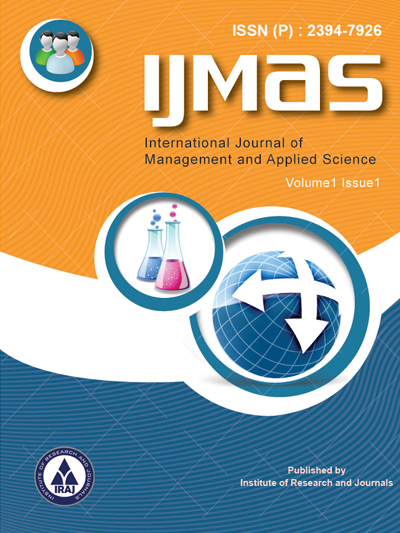Publish In |
International Journal of Management and Applied Science (IJMAS)-IJMAS |
 Journal Home Volume Issue |
||||||||
Issue |
Volume-1,Issue-9 ( Oct, 2015 ) | |||||||||
Paper Title |
Comparison Of Two Modeling Approaches To Predict The Distribution Of Plant Species In Rangelands | |||||||||
Author Name |
M. A. Zare Chahouki, L. Khalasi Ahvazi, M. Shafizadeh | |||||||||
Affilition |
Department of Rehabilitation of Arid and Mountainous Regions, University of Tehran, Iran PhD Student, Gorgan University of Agricultural Sciences and Natural Resources, Iran PhD Student, Alborz Campus, University of Tehran Iran | |||||||||
Pages |
69-72 | |||||||||
Abstract |
The main objective of this study is to compare the predictive ability of two habitat models, and to find the most effective environmental factors for predicting the plant species occurrence. The Logistic Regression (LR), and Artificial Neural Network (ANN) models were chosen to model the spatial distribution pattern of vegetation communities. Plant density and cover; soil texture, available moisture, pH, electrical conductivity (EC), organic matter, lime, gravel and gypsum contents and topography (elevation, slope and aspect) are those variables that have been sampled using the randomized systematic method. Within each vegetation type, the samples were collected using 15 quadrates placed at an interval of 50 m along three 750 m transects. As a necessary step, the maps of all factors affecting the predictive capability of the models were generated. The results showed that the predictive models using the LR and ANN methods are more suitable to predict the distribution of individual species. Using the finalized models, maps of individual species (for different species) or for all the species were generated in the GIS environment. To evaluate the predictive ability of the models, the accuracy of the predicted maps was compared against real-world vegetation maps using the Kappa statistic. The Kappa ( κ ) statistic was also used to evaluate the adequacy of vegetation mapping. The results revealed that maps generated using the LR and ANN models for Astragalus spp., Halocnemum strobilaceum, Zygophyllum eurypterum and Seidlitzia rosmarinus species have a high accordance with their corresponding actual maps of the study area. Due to the high level of adaptability of Artemisia sieberi, allowing this specie to grow in most parts of the study area with relatively different habitat conditions, a predictive model for this species could not be fixed. In such cases, a set of predictive models may be used to formulate the environment-vegetation relationship. Finally, the predictive ability of the LR and ANN models for mapping Astragalus spp. was determined as κ=0.86 and κ=0.91 respectively, implying a very good agreement between predictions and observations. Index Terms— Predictive model, Geostatistical method, Logistic Regression, Artificial Neural Networks, Kappa statistic. | |||||||||
| View Paper | ||||||||||